- Clone
- 16B12 (See other available formats)
- Regulatory Status
- RUO
- Other Names
- HA epitope tag, HA1, HA2, hemagglutinin, Hemagglutinin HA1 chain, Hemagglutinin HA2 chain, YPYDVPDYA, Hemagglutinin tag
- Isotype
- Mouse IgG1, κ
- Ave. Rating
- Submit a Review
- Product Citations
- publications

-

Total cell lysate (15 µg protein) from CHO (lane 1) and CHO stably transfected with HA tag fused protein (lane 2) were resolved by electrophoresis (4-12% Bis-Tris gel), transferred to nitrocellulose, and probed with 1:1000 diluted (1 µg/mL), 1:4000 diluted (0.25 µg/mL) and 1:10000 diluted (0.1 µg/mL) purified anti-HA.11 Epitope Tag antibody (clone 16B12) (upper). Proteins were visualized by chemiluminescence detection using 1:3000 diluted HRP Goat anti-mouse IgG antibody. 1:2000 dilution of Direct-Blot™ HRP anti-β-actin antibody (clone 2F1-1) was used as a loading control (lower). -

Transfected RBL1 cells expressing the HA tag on the cell surface were stained with purified anti-HA.11 epitope Tag (clone 16B12) (filled histogram) or purified mouse IgG1, κ isotype control (open histogram), followed by APC conjugated goat-anti-mouse IgG.
| Cat # | Size | Price | Quantity Check Availability | Save | ||
|---|---|---|---|---|---|---|
| 901521 | 100 µg | 216€ | ||||
| 901522 | 1 mg | 572€ | ||||
The HA tag (hemagglutinin) is an amino acid sequence derived from the human influenza hemagglutinin surface glycoprotein, corresponding to amino acids 98-106. It is commonly used as a tag to facilitate detection, isolation, and purification of proteins. The full amino acid sequence is: YPYDVPDYA.
Product DetailsProduct Details
- Antibody Type
- Monoclonal
- Host Species
- Mouse
- Immunogen
- Monoclonal antibody HA.11 was raised against the twelve amino acid peptide CYPYDVPDYASL.
- Formulation
- 0.2 µm filtered in phosphate-buffered solution, pH 7.2, containing no preservative.
- Endotoxin Level
- Less than 0.01 EU/µg of the protein (< 0.001 ng/µg of the protein) as determined by the LAL test.
- Preparation
- The Ultra-LEAF™ (Low Endotoxin, Azide-Free) antibody was purified by affinity chromatography.
- Concentration
- The antibody is bottled at the concentration indicated on the vial, typically between 2 mg/mL and 3 mg/mL. Older lots may have also been bottled at 1 mg/mL. To obtain lot-specific concentration and expiration, please enter the lot number in our Certificate of Analysis online tool.
- Storage & Handling
- The antibody solution should be stored undiluted between 2°C and 8°C. This Ultra-LEAF™ solution contains no preservative; handle under aseptic conditions.
- Application
-
WB - Quality tested
FC - Verified
Purification - Reported in the literature, not verified in house - Recommended Usage
-
Each lot of this antibody is quality control tested by Western blotting. For Western blotting, the suggested use of this reagent is 1:2000-1:20000 diluted (0.05 - 0.5 µg/mL). It is recommended that the reagent be titrated for optimal performance for each application.
- Application Notes
-
Additional tested and reported applications of the 16B12 clone for the relevant formats include: western blot (WB), immunocytochemistry (ICC), immunoprecipitation (IP), and flow cytometry (FC).
*Our Posi-Tag Control Protein (931301) can be used as a helpful positive control for this antibody.
This second-generation HA antibody is an excellent substitute for the 12CA5 monoclonal antibody. The HA.11 antibody recognizes the influenza hemagglutinin epitope (YPYDVPDYA) which has been used extensively as a general epitope tag in expression vectors. The extreme specificity of the antibody allows unambiguous identification and quantitative analysis of the tagged protein. The HA.11 antibody recognizes HA epitopes located in the middle of protein sequences as well as at the N- or C-terminus. -
Application References
(PubMed link indicates BioLegend citation) -
- Kim JY, et al. 2003. J Neurosci. 23:5561. (IP, WB)
- Helliwell SB, et al. 2001. J Cell Biol. 153:649. (WB)
- Bennett BD, et al. 2000. J Biol Chem. 275:37712. (IF, IP, WB)
- Royer Y, et al. 2005. J. Biol. Chem. 29:27251. (FC)
- Smith BA, et al. 2012. Genes Cancer. 3:550. (IHC) PubMed
- Hogarth C, et al. 2015. Biol Reprod. 93:19. PubMed
- Görtz D, et al. 2015. Sci Rep. 5:14685. PubMed
- Wilson C, et al. 2015. PLoS One. 10:0139579. PubMed
- Smith B, et al. 2012. Genes Cancer. 3:550-563. PubMed
- Liu Z, et al. 2016. Nature. 530:98-102. PubMed
- Thoms M, et al. 2016. Nucleic Acids Res. 44:926-39. PubMed
- Kim Y, et al. 2016. Nat Commun. 7:10347. PubMed
- Rodríguez-Escudero M, et al. 2016. PLoS One. 11:0148032. PubMed
- Lehmann W, et al. 2016. Nat Commun. 7:10498. PubMed
- Testoni E, et al. 2016. EMBO Mol Med. 8: 105-16. PubMed
- Padilla S, et al. 2016. Nat Neurosci. 10.1038/nn.4274. PubMed
- Martins J, et al. 2016. J Cell Sci. 129:1271-82. PubMed
- Matak P, et al. 2016. Proc Natl Acad Sci U S A. 113:3428-35. PubMed
- Starokadomskyy P, et al. 2016. Nat Immunol. 17:495-504. PubMed
- Mitxelena J, et al. 2016. Nucleic Acids Res. 44:5557-70. PubMed
- Thongthip S, et al. 2016. Genes Dev. 30:645-59. PubMed
- Aaes T, et al. 2016. Cell Rep. 15:274-87. PubMed
- Hodge C, et al. 2016. J Biol Chem. 291:9396-9410. PubMed
- Alagramam K, et al. 2016. Nat Chem Biol. 12:444-51. PubMed
- Veit G, et al. 2016. PLoS Biol. 14:1002462. PubMed
- Lee B, et al. 2016. Development. 143:1721-31. PubMed
- Douchi D, et al. 2016. Plant Cell. 28:1182-99. PubMed
- Avgousti D, et al. 2016. Nature. 535:173-77. PubMed
- Shin H, et al. 2015. Nature. 534:553-7. PubMed
- Gross G, et al. 2016. Nat Methods. 10.1038/nmeth.3894. PubMed
- Dick M, et al. 2016. Nat Commun. 7:11929. PubMed
- Aldrin-Kirk P, et al. 2016. Neuron. 90:955-68. PubMed
- Fan R, et al. 2016. Nat Med. 22:780-91. PubMed
- Rowald K, et al. 2016. Cell Rep. 15:2679-91. PubMed
- Rampal R, Awasthi A, Ahuja V 2016. Development. 143:2334-43. PubMed
- Faden F, et al. 2016. Nat Commun. 7:12202. PubMed
- Lawson C, et al. 2016. Cancer Res. 76: 3826-37. PubMed
- Szargel R, et al. 2016. Hum Mol Genet. 10.1093/hmg/ddw189.. PubMed
- Damez-Werno D, et al. 2016. Proc Natl Acad Sci U S A. 113: 9623-28. PubMed
- Su P, et al. 2016. J Immunol. 197: 1054-64. PubMed
- Morozumi Y, et al. 2016. J Mol Cell Biol. 8:349-62. PubMed
- Miura Y, et al. 2016. Biochem J. 473:2591-602. PubMed
- Pashkova N, et al. 2016. Cell Rep. 17:303-15. PubMed
- Sanchez M, et al. 2016. J Biol Chem. 291:19760-73. PubMed
- Hwang J, Lee J, Pallas D 2016. J Biol Chem. 291:21008-19. PubMed
- Jiménez-Canino R, et al. 2016. J Biol Chem. 291:19068-78. PubMed
- Barquilla A, et al. 2016. Mol Biol Cell. 27:2757-70. PubMed
- Yadav S, et al. 2016. Sci Rep. 6:34100. PubMed
- Hashimoto A, et al. 2016. Oncogenesis. 0.388194444. PubMed
- Guirouilh-Barbat J, et al. 2016. PLoS Genet. 12:e1006230. PubMed
- Gómez-H L, et al. 2016. Nat Commun. 7:13298. PubMed
- Rademacher N, et al. 2016. Sci Rep. 6:35283. PubMed
- Lin Z, et al. 2016. Nat Genet. 10.1038/ng.3701. PubMed
- Kaczmarska Z, et al. 2016. Nat Chem Biol. 10.1038/nchembio.2217. PubMed
- Zee B, et al. 2016. PLoS One. 11:e0163820. PubMed
- Despras E, et al. 2016. Nat Commun. 7:13326. PubMed
- Zhang H, et al. 2016. J Neurosci. 36:11837-50. PubMed
- Zhang M, et al. 2016. Cell Res. 26:1302-19. PubMed
- Baehr C, et al. 2016. J Biol Chem. 291:26875-85. PubMed
- Boehm E, et al. 2016. J Biol Chem. 291:25877-87. PubMed
- Gail Kilroy, et al. 2016. J Biol Chem. 291:27289-97. PubMed
- Hongchen Cai, Aimin Liu 2016. Proc Natl Acad Sci U S A. 113:14751-6. PubMed
- Tam K, et al. 2016. MBio. 7:e02024-16. PubMed
- Hanke L, et al. 2016. MBio. 7(6). pii: e01569-16. PubMed
- Stoeber M, et al. 2016. Proc Natl Acad Sci U S A. 113(50):E8069-E8078. PubMed
- Gu Q, et al. 2016. J Virol. 90:10545-57. PubMed
- Ramachandran S, et al. 2016. J Biol Chem. 291: 25489-504. PubMed
- Kaufmann T, et al. 2016. J Cell Sci. 129:4607-21. PubMed
- Piwko W, et al. 2016. EMBO J. 35:2584-601. PubMed
- Matsuo Y, et al. 2016. J Cell Sci. 129:4592-606. PubMed
- Athmer J, et al. 2017. MBio. 10.1128/mBio.02320-16. PubMed
- Gao L, et al. 2017. J Cell Sci. 130:396-405. PubMed
- Gong Y, et al. 2017. Genes Dev. 31:46-58. PubMed
- K Kataoka, K Mochizuki 2017. J Cell Sci. 130:480-9. PubMed
- Liszczak G, et al. 2017. Proc Natl Acad Sci U S A. 114:681-6. PubMed
- Haggie P, et al. 2017. J Biol Chem. 292:771-85. PubMed
- T Taetzsch, et al. 2017. J Neurosci. 37:70-82. PubMed
- Yagita Y, et al. 2017. J Biol Chem. 292:691-705. PubMed
- Chong Jiang, et al. 2017. J Biol Chem. 292:3137-45. PubMed
- Maeda R, et al. 2017. J Biol Chem. 292:3201-12. PubMed
- Davis RB, et al. 2017. JCI Insight. 2:e92465. PubMed
- Daniel JA, et al. 2017. Elife. 6:e26338. PubMed
- Oishi A, et al. 2017. Sci Rep. 7:8990. PubMed
- Product Citations
-
- RRID
-
AB_2716058 (BioLegend Cat. No. 901521)
AB_2716059 (BioLegend Cat. No. 901522)
Antigen Details
- Biology Area
- Cell Biology
- Gene ID
- NA
- UniProt
- View information about HA.11 on UniProt.org
Related Pages & Pathways
Pages
Related FAQs
- Do you guarantee that your antibodies are totally pathogen free?
-
BioLegend does not test for pathogens in-house aside from the GoInVivo™ product line. However, upon request, this can be tested on a custom basis with an outside, independent laboratory.
- Does BioLegend test each Ultra-LEAF™ antibody by functional assay?
-
No, BioLegend does not test Ultra-LEAF™ antibodies by functional assays unless otherwise indicated. Due to the possible complexities and variations of uses of biofunctional antibodies in different assays and because of the large product portfolio, BioLegend does not currently perform functional assays as a routine QC for the antibodies. However, we do provide references in which the antibodies were used for functional assays and we do perform QC to verify the specificity and quality of the antibody based on our strict specification criteria.
- Does BioLegend test each Ultra-LEAF™ antibody for potential pathogens?
-
No, BioLegend does not test for pathogens in-house unless otherwise indicated. However, we can recommend an outside vendor to perform this testing as needed.
- Have you tested this Ultra-LEAF™ antibody for in vivo or in vitro applications?
-
We don't test our antibodies for in vivo or in vitro applications unless otherwise indicated. Depending on the product, the TDS may describe literature supporting usage of a particular product for bioassay. It may be best to further consult the literature to find clone specific information.
Other Formats
View All HA.11 Reagents Request Custom ConjugationCustomers Also Purchased
Compare Data Across All Formats
This data display is provided for general comparisons between formats.
Your actual data may vary due to variations in samples, target cells, instruments and their settings, staining conditions, and other factors.
If you need assistance with selecting the best format contact our expert technical support team.
-
Anti-HA.11 Epitope Tag Affinity Matrix
-
Alexa Fluor® 488 anti-HA.11 Epitope Tag
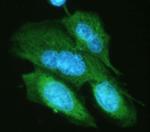
HA tagged CHO cells stained with Alexa Fluor® 488 Labeled An... 
Transfected RBL1 cells expressing the HA tag on the cell sur... -
Alexa Fluor® 594 anti-HA.11 Epitope Tag
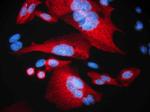
Staining of HA.11 Clone 16B12 Monoclonal Antibody, Alexa Flu... -
Anti-HA.11 Epitope Tag
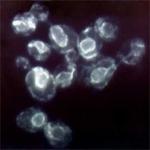
Immunofluorescence of HA.11 tagged Sbhlp protein. Photo cour... 
Western blot analysis of cell lysates from CHO and CHO HA st... 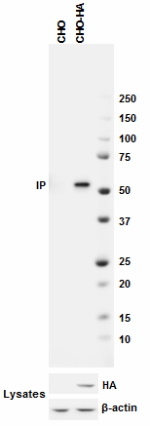
Immunoprecipitation of HA protein from CHO and CHO-HA stable... 
Immunofluorescence staining of HeLa cells transfected withou... -
Biotin anti-HA.11 Epitope Tag
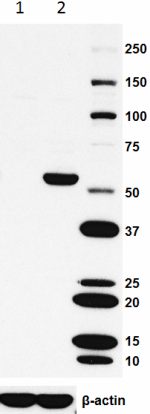
Total lysates (15 µg protein) from CHO (lane 1) and CHO HA s... 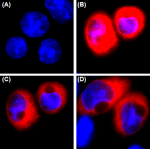
Immunofluorescence of HA-tagged plasmid-transfected A549 cel... -
FITC anti-HA.11 Epitope Tag
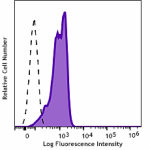
Transfected RBL1 cells expressing the HA tag on the cell sur... -
Purified anti-HA.11 Epitope Tag
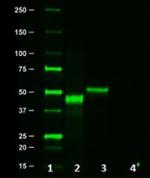
Western blot of Clone 16B12. Lane 1: Molecular weight marker... 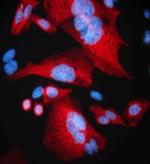
Staining of Clone 16B12 on methanol fixed CHO cells transfec... 
Immunoprecipitation of HA protein from CHO and CHO-HA stable... 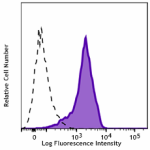
Transfected RBL1 cells expressing the HA tag on the cell sur... -
Alexa Fluor® 647 anti-HA.11 Epitope Tag
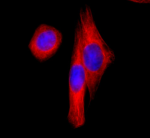
HA tag stably transfected CHO cells were fixed with ice cold... 
Transfected RBL1 cells expressing the HA tag on the cell sur... -
PE anti-HA.11 Epitope Tag

CHO-K1 cells (open histogram) or HA tag stably transfected c... 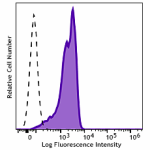
Transfected RBL1 cells expressing the HA tag on the cell sur... -
Direct-Blot™ HRP anti-HA.11 Epitope Tag
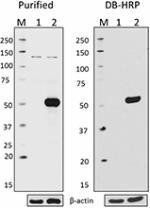
Total cell lysate from CHO (lane 1) and CHO stably transfect... -
Ultra-LEAF™ Purified anti-HA.11 Epitope Tag

Total cell lysate (15 µg protein) from CHO (lane 1) and CHO ... 
Transfected RBL1 cells expressing the HA tag on the cell sur... -
Brilliant Violet 421™ anti-HA.11 Epitope Tag
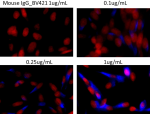
CHO cells stably transfected with HA tag were fixed with 4% ... 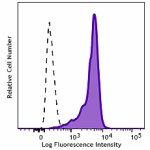
Transfected RBL1 cells expressing the HA tag on the cell sur... -
PE/Dazzle™ 594 anti-HA.11 Epitope Tag

CHO-K1 cells (open histogram) or HA tag stably transfected c... 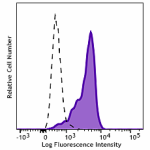
Transfected RBL1 cells expressing the HA tag on the cell sur... -
PE/Cyanine7 anti-HA.11 Epitope Tag
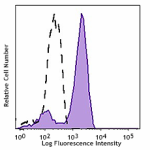
CHO-K1 cells (open histogram) or HA tag stably transfected c... 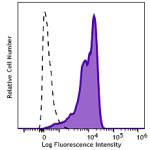
Transfected RBL1 cells expressing the HA tag on the cell sur... -
Pacific Blue™ anti-HA.11 Epitope Tag
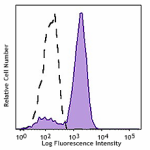
CHO-K1 cells (open histogram) or HA tag stably transfected c... 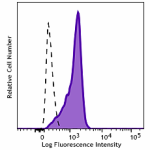
Transfected RBL1 cells expressing the HA tag on the cell sur... -
APC anti-HA.11 Epitope Tag
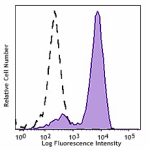
CHO-K1 cells (open histogram) or HA tag stably transfected c... 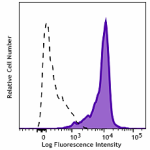
Transfected RBL1 cells expressing the HA tag on the cell sur... -
PerCP/Cyanine5.5 anti-HA.11 Epitope Tag

CHO-K1 cells (open histogram) or HA tag stably transfected c... 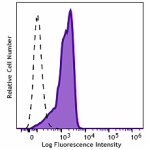
Transfected RBL1 cells expressing the HA tag on the cell sur... -
TotalSeq™-C1131 anti-HA.11 Epitope Tag
-
TotalSeq™-A1131 anti-HA.11 Epitope Tag
-
TotalSeq™-B1131 anti-HA.11 Epitope Tag
 Login / Register
Login / Register 





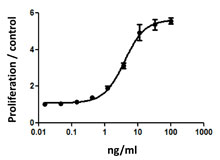
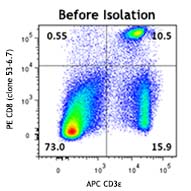
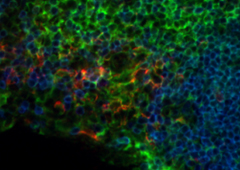
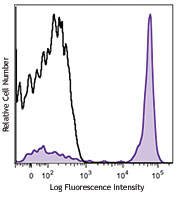



Follow Us